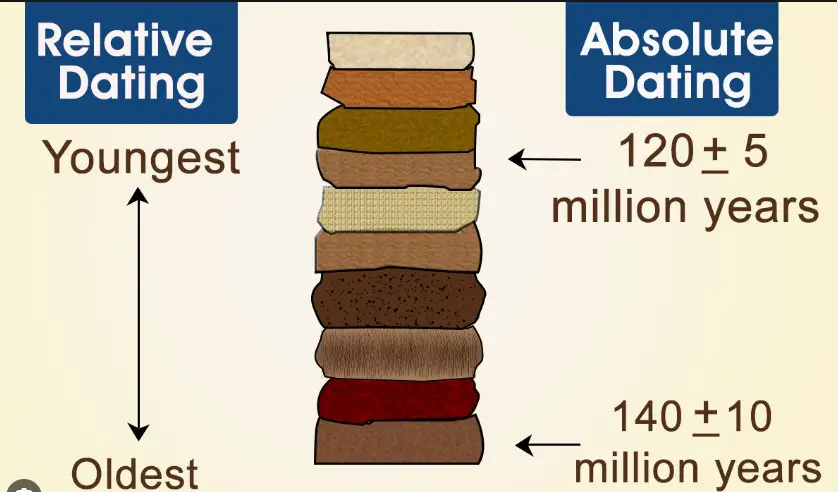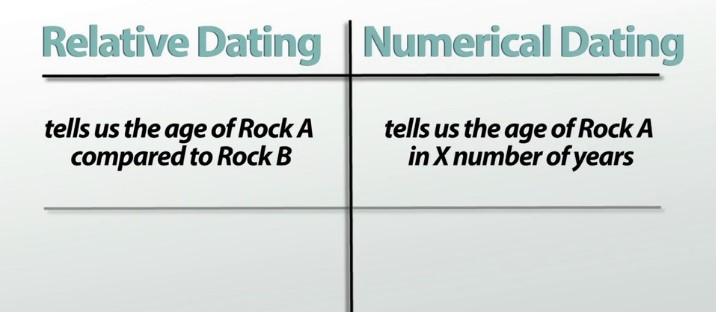Dates are a fundamental part of our daily communication and documentation, serving as a crucial component in scheduling, planning, and historical recording. The way we express dates can significantly impact the clarity and effectiveness of our communication. However, the diversity in date formats, particularly between numerical and relative dates, can lead to confusion and misinterpretation.
Numerical dates refer to specific calendar dates represented by numbers, such as “12/31/2024” or “2024-12-31,” indicating the month, day, and year. Relative dates, on the other hand, describe a point in time in relation to the present moment, such as “next week,” “three days ago,” or “in two years.” Each format serves different purposes and contexts, emphasizing the importance of choosing the right one for clear and accurate communication.
Understanding the distinction between numerical and relative dates is more than an exercise in semantics; it’s a practical necessity. From setting deadlines to documenting historical events, the way we refer to dates affects how we plan, remember, and coordinate activities. This article sheds light on the nuances of both formats, highlighting their applications, benefits, and limitations without delving into unnecessary jargon or complex explanations.

Date Basics
What Are Dates?
Dates serve as the backbone of time management and historical documentation, marking points in time in a systematic and organized manner. They allow us to schedule events, track progress, and commemorate significant moments in history. Understanding the role of dates is fundamental to navigating everyday life, from planning a meeting to celebrating an anniversary.
Numerical vs Relative
When we talk about dates, we generally encounter two main types: numerical and relative. Numerical dates refer to a specific day on the calendar, marked in a sequence of numbers that represent the day, month, and year. Relative dates, on the other hand, describe a time’s position relative to the present moment, such as “next week” or “last year”. Both types play crucial roles in our communication, yet they serve different purposes depending on the context.
Numerical Dates
Definition
Numerical dates are a precise method of representing specific days on the calendar. They eliminate ambiguity by providing an exact date, crucial for tasks requiring precision, such as legal documentation, event planning, and scientific research.
Formats Worldwide
Different parts of the world adopt various formats for numerical dates, leading to a diversity that reflects cultural and regional preferences. Understanding these formats is vital for effective communication, especially in our globalized world.
MM/DD/YYYY
This format is primarily used in the United States and a few other countries. It starts with the month, followed by the day, and ends with the year. For example, July 4, 2024, would be written as 07/04/2024.
DD/MM/YYYY
Preferred in many countries around the world, including most of Europe, Australia, and New Zealand, this format places the day before the month. Using the same example, it would appear as 04/07/2024.
YYYY/MM/DD
Adopted widely in East Asian countries and increasingly used in international contexts for its logical sequencing from the largest to the smallest unit of time, this format would render our example as 2024/07/04.
Benefits
The main advantage of numerical dates is their precision. They provide an exact point in time, crucial for official records and when coordinating across different geographical locations. Numerical dates also facilitate sorting and analysis in data management systems.
Limitations
However, the diversity in formats can lead to confusion, especially in international communication. Misinterpretation of dates can result in missed deadlines, scheduling conflicts, and other complications. It requires individuals to be aware of the context and the format used by their counterparts.
Relative Dates
Definition
Relative dates express the relation of a date to the current time, such as “tomorrow,” “next month,” or “last year.” This format is less about the exact calendar date and more about the time’s position relative to now.
Examples
“Next Tuesday”
Indicates the Tuesday that comes after the current date, regardless of the exact date.
“Two weeks ago”
Refers to the date exactly two weeks before the current day.
“In three months”
Points to a date three months from today, without specifying the day or year.
Benefits
Relative dates are flexible and contextual, making them ideal for casual conversations and situations where the exact date is either unknown or less relevant. They simplify planning by focusing on the time relation rather than specific calendar dates.
Limitations
The main drawback of relative dates is their ambiguity. Without a clear reference point, misunderstandings can arise, especially if the speaker and listener have different perceptions of the “current time.” This format also relies heavily on shared knowledge or assumptions about the context.
Usage Contexts
Numerical Dates in Use
Official Documents
Legal documents, contracts, and official correspondence rely on numerical dates for their clarity and legal standing.
International Communication
When coordinating across borders, numerical dates help prevent confusion, ensuring that everyone understands the exact timing of events or deadlines.
Relative Dates in Use
Casual Conversations
When making plans with friends or discussing events informally, relative dates offer a convenient and straightforward way to communicate.
Project Planning
In early stages of planning, relative dates can help outline timelines and milestones without committing to specific calendar dates, allowing for flexibility.
Conversion Challenges
From Relative to Numerical
Converting relative dates to numerical dates can be tricky because it requires a precise understanding of the current date and the specific context in which the relative date is used. For example, converting “next Thursday” into a numerical date depends on what day it is today and may require consulting a calendar to determine the exact date.
From Numerical to Relative
Turning numerical dates into relative dates involves assessing the distance between the date in question and the current date. This process can introduce ambiguity, especially when the time span includes months with varying numbers of days or when crossing year boundaries.
Tools and Tips
To navigate these challenges, here are some tools and tips:
- Digital Calendars: Utilize the power of digital calendars which can automatically convert dates from one format to another.
- Date Conversion Software: Many software tools and online platforms can quickly convert dates between different formats.
- Clear Communication: When converting dates, communicate the basis of your conversion clearly to avoid misunderstandings.
Cultural Differences
Numerical Date Preferences
Cultural preferences for numerical date formats vary widely. Understanding these preferences is crucial for effective communication, especially in a global context. For instance, the MM/DD/YYYY format is common in the U.S., while many European countries prefer DD/MM/YYYY.
Understanding Relative Dates
Relative date expressions can also vary culturally, with some languages and cultures having specific terms for certain days relative to the present (like “overmorrow” for the day after tomorrow in English, though rarely used). Understanding these nuances can enhance communication and reduce misunderstandings.
Precision and Ambiguity
When Precision Matters
In legal documents, scientific research, and historical records, precision is non-negotiable. Numerical dates are indispensable in these contexts, as they provide the exact date without room for interpretation or error.
Navigating Ambiguity
Conversely, in casual conversations or early stages of project planning, ambiguity may be acceptable or even preferred. Relative dates offer the flexibility needed in these situations, allowing for adjustments based on evolving circumstances.
Technology and Dates
Software Handling of Dates
Modern software systems are designed to handle dates in various formats, ensuring compatibility across different cultural contexts. These systems often include features for automatic conversion and localization, tailoring date formats to the user’s location and preferences.
Database Storage
In databases, dates are typically stored in a standardized format (like ISO 8601), which reduces ambiguity and facilitates data analysis and manipulation across different systems.
User Interface Displays
User interfaces often adapt the display of dates based on the user’s locale, showing dates in the format that is most familiar to them. This adaptability improves usability and user satisfaction.
Algorithms for Relative Dates
Algorithms that calculate relative dates take into account the current date and adjust for factors like leap years and varying month lengths. These algorithms are essential for software that needs to display or calculate dates in a user-friendly manner.
Best Practices
Choosing the Right Format
Selecting the right date format depends on the context:
- Use numerical dates for clarity and precision.
- Opt for relative dates when flexibility and context are more important.
Clarifying Ambiguity
To avoid misunderstandings, always clarify the date format being used and consider providing the date in another format as confirmation. For example, when using a numerical date, you might also include the day of the week: “The meeting is on 04/07/2024 (Thursday).”
Considering Your Audience
Understanding your audience is key to effective communication. Consider the cultural background and preferences of your audience when choosing a date format. When in doubt, use the most universally understood format (like YYYY-MM-DD) or explicitly state the month to avoid confusion.
Frequently Asked Questions
What are numerical dates?
Numerical dates are a way of representing calendar dates strictly through numbers, typically indicating the day, month, and year in a specific sequence. This format is widely used in formal documents, international communication, and digital data storage for its precision and universality, minimizing the risk of ambiguity in global interactions.
How do relative dates work?
Relative dates describe time in relation to the current date or moment, using terms like “tomorrow,” “next month,” or “last year.” They are often used in casual conversations and planning contexts where the exact calendar date is either not known or its relation to the present moment is more relevant. Relative dates provide flexibility but can lead to confusion without a shared reference point.
Why are there different numerical date formats?
Different numerical date formats have evolved based on cultural and regional practices. For example, the United States commonly uses the MM/DD/YYYY format, while many European countries prefer DD/MM/YYYY, and some Asian countries use YYYY/MM/DD. These variations underscore the importance of context and audience understanding in international communications.
Can software convert between numerical and relative dates?
Yes, many software applications and programming languages provide functions to convert between numerical and relative dates. These tools can automatically adjust to the user’s time zone, apply cultural date formats, and calculate relative dates based on specific inputs, streamlining tasks that involve date manipulation for global audiences.
Conclusion
The distinction between numerical and relative dates is more than a linguistic preference; it’s a crucial factor in effective communication, documentation, and planning. By understanding and correctly applying these formats, we can enhance clarity, avoid misunderstandings, and facilitate smoother interactions across different contexts and cultures.
As we navigate through the complexities of scheduling, planning, and historical recording, the choice between numerical and relative dates becomes a testament to our ability to adapt our communication for accuracy and understanding. This awareness not only improves our day-to-day interactions but also enriches our approach to documenting and interpreting the passage of time.

